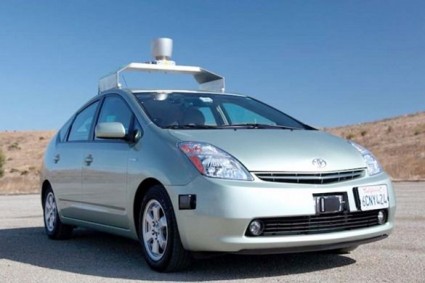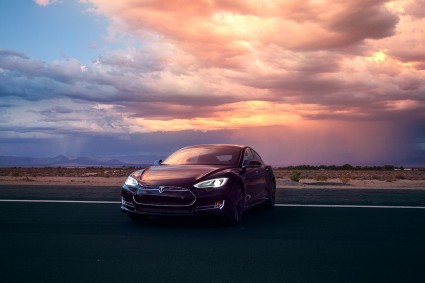
Robohub.org
Future driving: Business models for robocars
 When I talk about robocars, I often get quite opposite reactions:
When I talk about robocars, I often get quite opposite reactions:
- Americans, in particular, will never give up car ownership! You can pry the bent steering wheel from my cold, dead hands.
- I can’t see why anybody would own a car if there were fast robotaxi services available!
- Surely human drivers will be banned from the roads before too long.
I predict none of these extremes will be true. I predict the market will offer all options to the public, and several options will be very popular. I am not even sure which will be the most popular.
- Many people will stick to buying and driving classic, manually driven cars. The newer versions of these cars will have fancy Advanced Driver Assistance Systems (ADAS) that make them much harder to crash, and their accident levels will be lower.
- Many will buy a robocar for their near-exclusive use. It will park near where it drops them off and always be ready. It will keep their stuff in the trunk.
- People who live and work in an area with robotaxi service will give up car ownership, and hire for all their needs, using a wide variety of vehicles.
- Some people will purchase a robocar mostly for their use, but will hire it out when they know they are not likely to use it, allowing them to own a better car. They will make rarer use of robotaxi services to cover specialty trips or those times when they hired it out and ended up needing it. Their stuff will stay in a special locker in the car.
In addition, people will mix these models. Families that own two or more cars will switch to owning fewer cars and hiring for extra use and special uses. For example, if you own a two-person car, you would summon a larger taxi when three or more are together. In particular, parents may find that they don’t want to buy a car for their teenager, but would rather just subsidize their robotaxi travel. Parents will want to do this and get logs of where their children travel, and of course teens will resist that, causing a conflict.
The current multi-car family is the most likely place for change. Right now, families with two cars use one car (the newer one, typically) more than the other. This is true even if both people in a couple travel the same, because while solo trips are done in each person’s private car, joint trips are usually done in the nicer car. As such, it’s easier to rely on a shared car service for the second car. When it comes to teens, parents resist both the danger a teen is put in by driving, and the high cost of insurance. Superior ADAS should reduce those for manual cars, but the factor will still remain. Parents don’t want to buy the machine that might kill their child, but teens crave mobility — and parents remember their own childhood, and also tire of loaning out their personal car.
Let’s consider couples moving from two cars to one car plus robotaxi service.
In order to give up a car to use robotaxi service, it is necessary that the robotaxi service serve the home and the workplace of those who will shift to it, plus a number of popular destinations. It is not necessary it serve all destinations, unless it is very common that both drivers want to frequently go to non-served locations at the same time. In general, it is best if both workplaces are in the service area, because otherwise the one who works outside the area will take the private car away all day, making it hard for the other to get outside the service area. If both can commute, then they can switch off which person gets the private car that day based on what they plan.
 Robotaxi services will be able to get you outside their service area, of course. They will do it by either letting you take the wheel and drive yourself, keeping the car to yourself until you get home, or by taking you to the edge of the service area where you quickly switch into a traditional manually driven carshare vehicle. This should work fairly well, but it’s still a bit of inconvenience and extra cost to do this so one-car couples will prefer to use their private car on these trips.
Robotaxi services will be able to get you outside their service area, of course. They will do it by either letting you take the wheel and drive yourself, keeping the car to yourself until you get home, or by taking you to the edge of the service area where you quickly switch into a traditional manually driven carshare vehicle. This should work fairly well, but it’s still a bit of inconvenience and extra cost to do this so one-car couples will prefer to use their private car on these trips.
The next question is, what car do you own as your private car? Today, this is most commonly an SUV, pickup truck or five-passenger sedan. For a couple, a two-person vehicle makes the most sense, and possibly even a two-person “inline” face-to-face vehicle which is very narrow. As a narrow vehicle it is able to move through traffic more readily and store itself easily and cheaply. It would meet most needs, though a bigger vehicle would be summoned for special trips and perhaps long distance trips. The small vehicle may make sense as an electric, once battery costs drop to $300/kwh or less.
Larger families might opt for something larger. Today they often get minivans and SUVs, which are certainly nice if moving multiple kids or going to kids’ activities that need gear and supplies. Speciality vehicles may arise to cater to all the different classes of family needs: the couple with a one small child, the couple with two, the couple with a tween, etc. As cars become easier to swap out — and of course hired robotaxis are swapped out every day — it makes more sense to go for something designed for your vey specific needs rather than something general purpose.
Dealing with your stuff
I am guilty of keeping many things in the trunk of my car. Many of them probably don’t need to be there, but some are things I like to have always available, such as my camera gear and tripods, spare medicines, clothing and gear for unexpected weather or an overnight bag. Some of these needs can be met by delivery robots that could quickly get me an umbrella or warm coat, since the weather does not come on us without warning, but the camera gear I need immediately if there is something surprising to photograph.
For this I have envisioned the “Stuff Depot” concept, found in my 2008 article A week of Robocars. Here, you have a special locker, and your car (or any car you hire) is able to make a quick stop at a depot near you to drop off or pick up this locker. It’s involved, but does answer the question. At the same time, people who live in taxi cities, like Manhattan, just get used to the idea they don’t get to carry a lot of stuff with them at all times, and only keep what they can carry in a handbag or backpack.
The car as status symbol
 Many people are attracted to particular cars to show off their status and wealth, or express their style. Some cars are valued because they are expensive, which is a nice racket to get into. Those who buy cars will still be able to display them in their driveways if they so wish, and be seen regularly arriving and leaving in them.
Many people are attracted to particular cars to show off their status and wealth, or express their style. Some cars are valued because they are expensive, which is a nice racket to get into. Those who buy cars will still be able to display them in their driveways if they so wish, and be seen regularly arriving and leaving in them.
Unlike conventional “hailed” taxis, the density of robotaxi service should be enough to allow varying levels of price, quality and service. One could subscribe to a service that always sends a fancy red Mercedes, for an extra cost. For trips planned with any advance warning, such service could be assured.
Unfortunately there is a reverse effect for on-demand trips. If you want a car on the spur of the moment, you will be told the fancy red Mercedes is 10 minutes away, but a generic small vehicle is one minute away. The luxury service draws from a special fleet, but “first available” can draw from an array of combined fleets — any car in town in your price range. Which do you take becomes a difficult question. Of course, had you thought to request the car 10 minutes before you needed to leave, you could have gotten just what you wanted in this situation, but unless there is a large oversupply of luxury vehicles, there will be times when they are scarce. You can always serve a customer in a vehicle that is more expensive than they paid for, but it’s a different story to serve them a cheaper product, even though that’s generally going to be faster. Will people care more about speed and flexibility, or will they care about luxury and showing off status symbols?
The big thing to note is that it becomes practical to see vehicles with a much greater variety than we do today, particularly if people take the view of “any car if I’m in a hurry, and the particular car I want if I summoned a modest amount of time in advance.” Any market sector that’s big enough can merit a vehicle designed for it. That’s made more true by other trends in manufacturing that make it easier to generate small volume vehicles, such as 3-D printing and modular designs based on electric powertrains.
A version of this article originally appeared on robocars.com.
If you liked this article, you may also be interested in:
- Robocars: A natural fit for retirement communities
- The two cultures of robocars
- Robots Podcast: Mobility Transformation Facility
- Readers support cars that communicate and self-organize
- Robots Podcast: Cruise
See all the latest robotics news on Robohub, or sign up for our weekly newsletter.
tags: Automotive, autonomous driving, robocars, robohub focus on autonomous driving




